Abstract
OBJECTIVE--To investigate clinical features of acute allergic reactions to peanuts and other nuts. DESIGN--Analysis of data from consecutive patients seen by one doctor over one year in an allergy clinic at a regional referral centre. SUBJECTS--62 patients aged 11 months to 53 years seen between October 1993 and September 1994. MAIN OUTCOME MEASURES--Type and severity of allergic reactions, age at onset of symptoms, type of nut causing allergy, results of skin prick tests, and incidence of other allergic diseases and associated allergies. RESULTS--Peanuts were the commonest cause of allergy (47) followed by Brazil nut (18), almond (14), and hazelnut (13). Onset of allergic symptoms occurred by the age of 2 years in 33/60 and by the age of 7 in 55/60. Peanuts accounted for all allergies in children sensitised in the first year of life and for 82% (27/33) of allergies in children sensitised by the third year of life. Multiple allergies appeared progressively with age. The commonest symptom was facial angioedema, and the major feature accounting for life threatening reactions was laryngeal oedema. Hypotension was uncommon. Of 55 patients, 53 were atopic--that is, had positive skin results of tests to common inhaled allergens--and all 53 had other allergic disorders (asthma, rhinitis, eczema) due to several inhaled allergens and other foods. CONCLUSIONS--Sensitisation, mainly to peanuts, is occurring in very young children, and multiple peanut/nut allergies appear progressively. Peanut and nut allergy is becoming common and can cause life threatening reactions. The main danger is laryngeal oedema. Young atopic children should avoid peanuts and nuts to prevent the development of this allergy.
Full text
PDF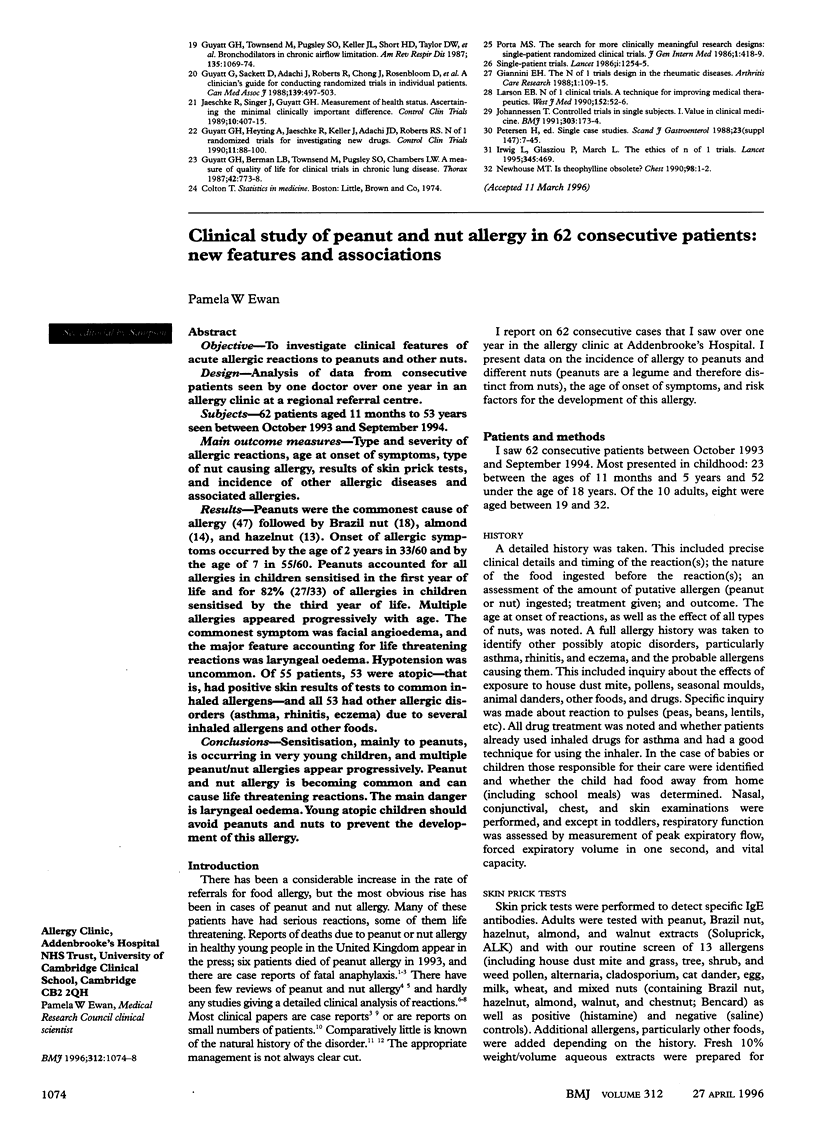
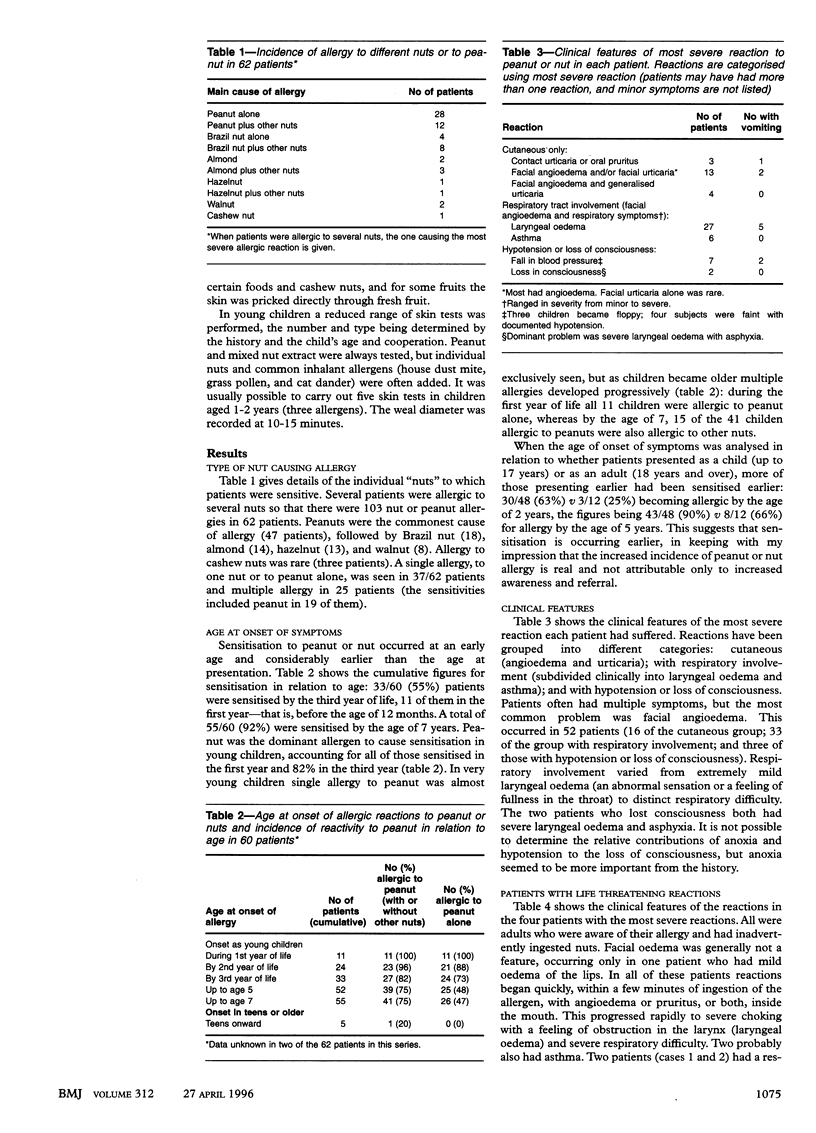
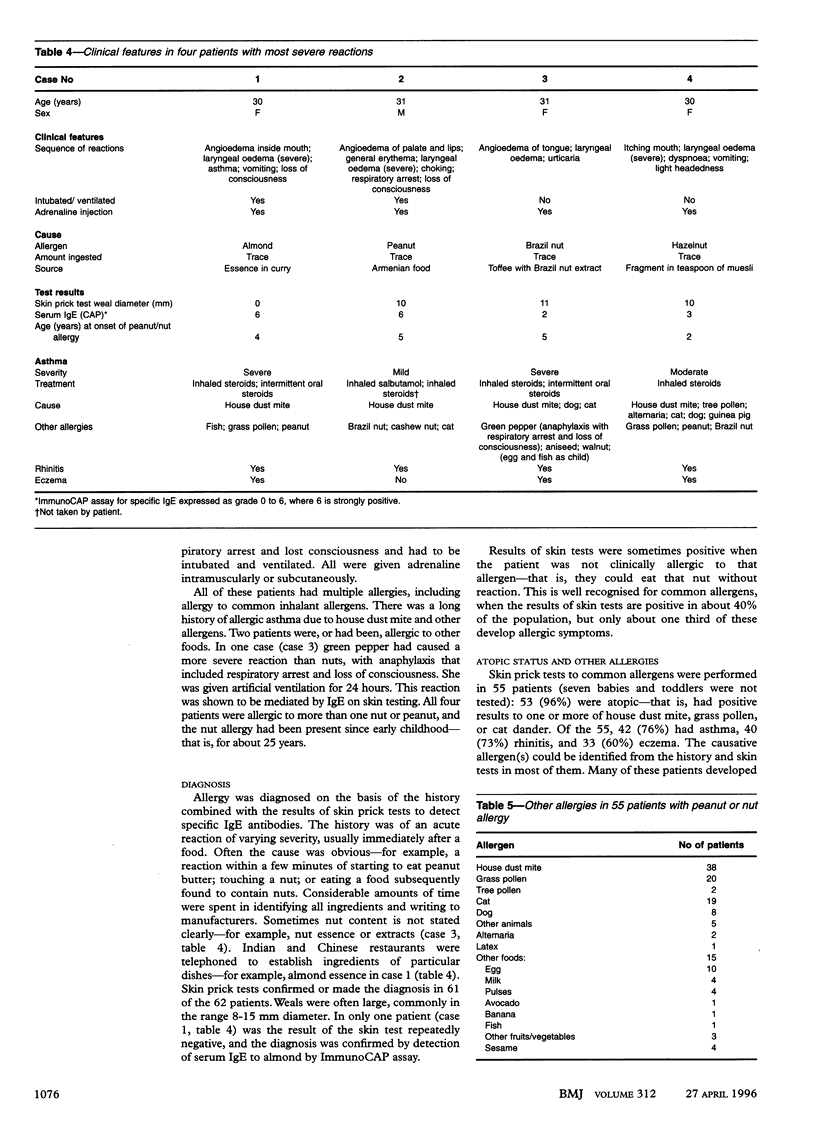
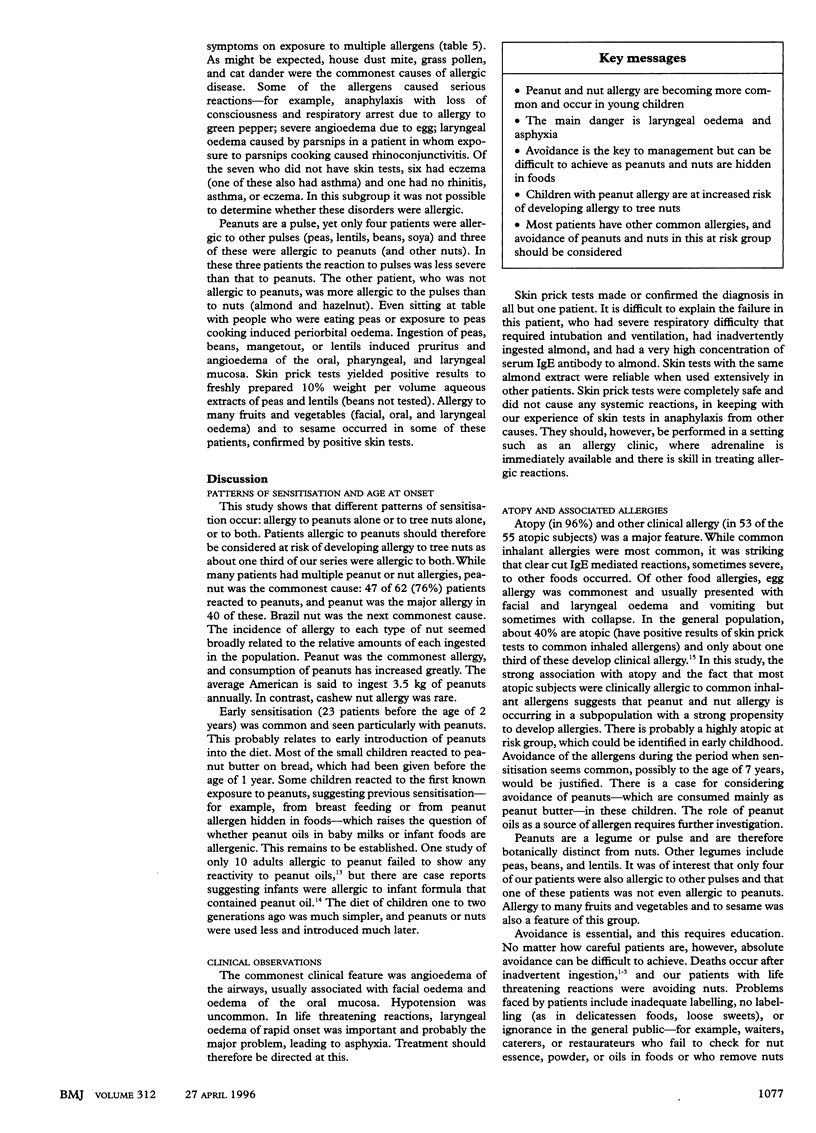
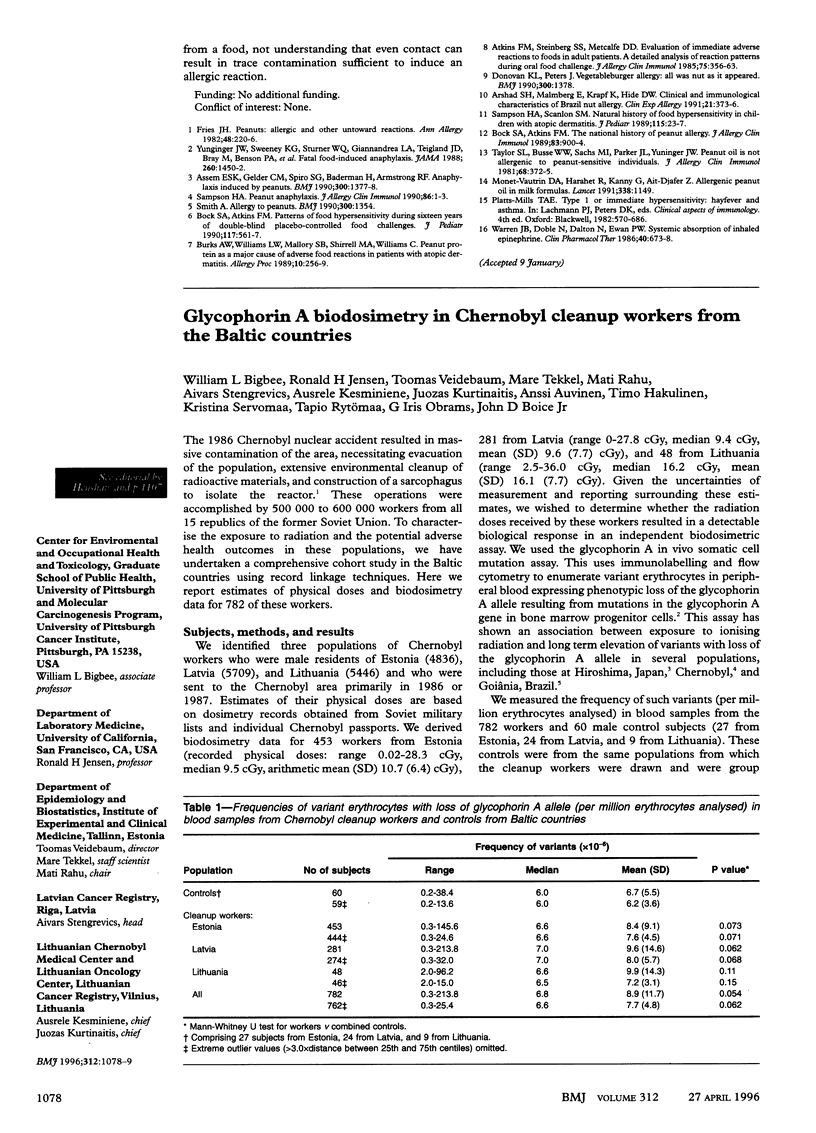
Selected References
These references are in PubMed. This may not be the complete list of references from this article.
- Arshad S. H., Malmberg E., Krapf K., Hide D. W. Clinical and immunological characteristics of Brazil nut allergy. Clin Exp Allergy. 1991 May;21(3):373–376. doi: 10.1111/j.1365-2222.1991.tb01671.x. [DOI] [PubMed] [Google Scholar]
- Assem E. S., Gelder C. M., Spiro S. G., Baderman H., Armstrong R. F. Anaphylaxis induced by peanuts. BMJ. 1990 May 26;300(6736):1377–1378. doi: 10.1136/bmj.300.6736.1377. [DOI] [PMC free article] [PubMed] [Google Scholar]
- Atkins F. M., Steinberg S. S., Metcalfe D. D. Evaluation of immediate adverse reactions to foods in adult patients. II. A detailed analysis of reaction patterns during oral food challenge. J Allergy Clin Immunol. 1985 Mar;75(3):356–363. doi: 10.1016/0091-6749(85)90072-7. [DOI] [PubMed] [Google Scholar]
- Bock S. A., Atkins F. M. Patterns of food hypersensitivity during sixteen years of double-blind, placebo-controlled food challenges. J Pediatr. 1990 Oct;117(4):561–567. doi: 10.1016/s0022-3476(05)80689-4. [DOI] [PubMed] [Google Scholar]
- Bock S. A., Atkins F. M. The natural history of peanut allergy. J Allergy Clin Immunol. 1989 May;83(5):900–904. doi: 10.1016/0091-6749(89)90103-6. [DOI] [PubMed] [Google Scholar]
- Donovan K. L., Peters J. Vegetableburger allergy: all was nut as it appeared. BMJ. 1990 May 26;300(6736):1378–1378. doi: 10.1136/bmj.300.6736.1378. [DOI] [PMC free article] [PubMed] [Google Scholar]
- Fries J. H. Peanuts: allergic and other untoward reactions. Ann Allergy. 1982 Apr;48(4):220–226. [PubMed] [Google Scholar]
- Moneret-Vautrin D. A., Hatahet R., Kanny G., Ait-Djafer Z. Allergenic peanut oil in milk formulas. Lancet. 1991 Nov 2;338(8775):1149–1149. doi: 10.1016/0140-6736(91)92008-p. [DOI] [PubMed] [Google Scholar]
- Sampson H. A. Peanut anaphylaxis. J Allergy Clin Immunol. 1990 Jul;86(1):1–3. doi: 10.1016/s0091-6749(05)80115-0. [DOI] [PubMed] [Google Scholar]
- Sampson H. A., Scanlon S. M. Natural history of food hypersensitivity in children with atopic dermatitis. J Pediatr. 1989 Jul;115(1):23–27. doi: 10.1016/s0022-3476(89)80323-3. [DOI] [PubMed] [Google Scholar]
- Smith T. Allergy to peanuts. BMJ. 1990 May 26;300(6736):1354–1354. doi: 10.1136/bmj.300.6736.1354. [DOI] [PMC free article] [PubMed] [Google Scholar]
- Taylor S. L., Busse W. W., Sachs M. I., Parker J. L., Yunginger J. W. Peanut oil is not allergenic to peanut-sensitive individuals. J Allergy Clin Immunol. 1981 Nov;68(5):372–375. doi: 10.1016/0091-6749(81)90135-4. [DOI] [PubMed] [Google Scholar]
- Warren J. B., Doble N., Dalton N., Ewan P. W. Systemic absorption of inhaled epinephrine. Clin Pharmacol Ther. 1986 Dec;40(6):673–678. doi: 10.1038/clpt.1986.243. [DOI] [PubMed] [Google Scholar]
- Yunginger J. W., Sweeney K. G., Sturner W. Q., Giannandrea L. A., Teigland J. D., Bray M., Benson P. A., York J. A., Biedrzycki L., Squillace D. L. Fatal food-induced anaphylaxis. JAMA. 1988 Sep 9;260(10):1450–1452. [PubMed] [Google Scholar]


